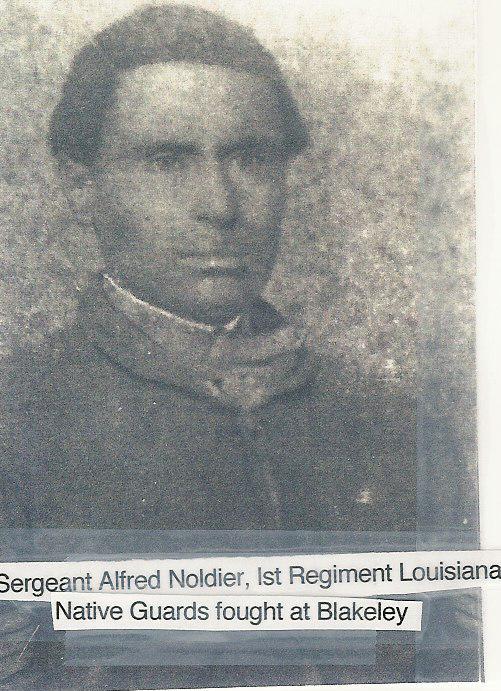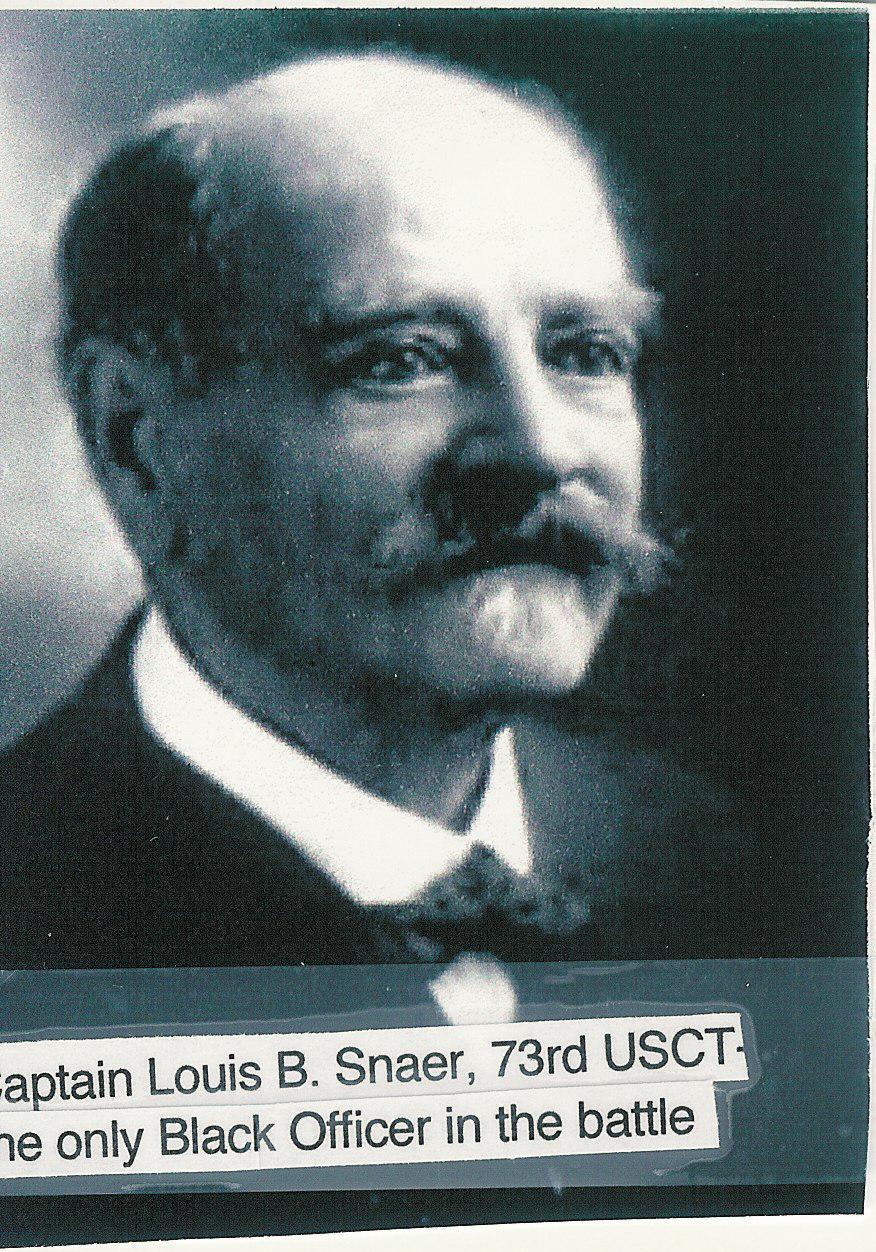Fort Blakeley
the Last Major Battle of the Civil War
History generally records the end of the Civil War as occurring
at Appomattox on 9 April 1865, when Robert E. Lee offered his
sword to Ulysses Grant. This probably happened for various
reasons. Most Civil War battles were fought in Virginia, and
surely, the Grant versus Lee was the most famous rivalry of the
conflict. Also, many assumed that if the unconquerable
Lee could be conquered, this would be the signal for all
combatants to lay down their arms. But news traveled slowly
during the Civil War, and while Confederate soldiers in the east
were stacking their arms, four thousand of their comrades in what
was called the war in the west, were preparing for
battle in a place called Fort Blakeley, Alabama.

The Battle of Fort Blakeley was actually the final chapter in the
battle for Mobile, considered by the Union to be the best
fortified city in the Confederacy; protected by a series of
redoubts and forts. But in the Battle of Mobile Bay in August of
1864, three of the major forts, Morgan, Gaines and Powell had
been captured by Union forces, effectively blockading Mobile Bay
and making it impossible for the South to get anything into
Mobile by sea.
It was theorized that with eight thousand men , the city of
Mobile could now be taken. But because of fierce combat in other
areas these troops were not available. The capture of Mobile
would have to wait.
By March of 1865, forty-five thousand Union soldiers were
poised to take the two remaining forts, Spanish Fort and Fort
Blakeley, protecting Mobile. While both were identified as forts,
suggesting walls to be scaled or destroyed, they were actually a
system of defenses, manned by a total of only nine thousand
Confederates. On 27 March 1865, the Union commander, General
Edward E.R.S. Canby, decided to lay siege to the two forts.
Spanish Fort then fell on 8 April.
The troops on either side of this conflict are a story in
themselves. By the end of the Civil War, ten percent of all Union
troops were African-American or United States Colored Troops
(USCT), and on 9 April 1865, at Fort Blakeley,
somewhere between six and nine thousand of these soldiers
participated.
One of the black regiments, the 73rd
USCT was from Louisiana, and originally all of
its members were Freedman from the New Orleans area. They were
land owners, and some were even slave owners, who in the
beginning had decided to fight for the South. But when they
realized the southern hierarchy was using them as a propaganda
tool and had no intention of letting them fight; they offered
their services to Union General Benjamin Butler when the
Yankees took New Orleans after the southern army
evacuated the city.
General Butler welcomed the Native Guard enthusiastically,
now considering them his own propaganda coup. How could the south
complain about arming blacks when the South had shown they didn't
want their black soldiers fighting for them? He further stated
that Officers in the 73rd would keep their commissions
and would now be officers in the Union army. Butler wired
Secretary of War Stanton, and the native Guards were mustered
into the Union army on 27 September 1862, their ranks having been
swelled by escaped slaves from Louisiana.

But black soldiers who joined to fight for their freedom would
soon find that prejudice against them existed in the North as
well. Butler had no intention of using them in combat. The
resistance of white soldiers would be too great, and white
enlisted men would never take orders from a black officer. Butler
turned out to be right. At the battle of Fort Blakeley, only one
officer in the 73rd, Captain Louis A. Snaer, was
African American. The others had resigned their commissions due
to prejudice. The only black soldiers were enlisted men, and even
for them – as put by one black soldier – it is an
uphill fight.
But by 9 April 1865, as the 73rd got ready to make its
final charge at Fort Blakeley, the black man had proved he could
fight and die just as bravely as his white counterpart. Abraham
Lincoln had put it best when he declared – Why are you
white soldiers so reluctant to shed your blood for the black man
when he so willingly sheds his blood for you.
It was 5:45 p.m. on 9 April when the 73rd
USCT, under the command of rabid abolitionist
Brigadier General William Anderson Pile, charged the Confederate
defenses at Fort Blakeley. A Confederate officer screamed out
– lay low and mow the ground, the damned niggers are
coming. Perhaps the officer who screamed did so because he
knew what to expect. Troops on both sides of the battle had faced
each other before, in the battle for the Tennessee river valley.
It's likely that some of the Confederates had been at Fort Pillow
in Tennessee, where it was said that troops under Nathan Bedford
Forrest had massacred over two hundred black soldiers who were
trying to surrender. Shelby Foote always referred to this story
as – a tissue of lies. But true or not, there can
be little doubt that black soldiers at Blakeley charged with the
battle cry – remember Fort Pillow! What happened
after they carried the day and planted their flag atop the
Confederate works is, like Fort Pillow, still being debated. It's
been said that some Confederates knew what was coming and
scrambled to get away from the black soldiers and surrender to
whites. There was even a report of black soldiers shooting white
officers who were trying to stop the murders.
General Pile, the rabid abolitionist, and one who hated
southerners, said nothing about atrocities in his report. My
men displayed excellent discipline and treated their captives as
prisoners of war. To the Seventy Third Colored Infantry belongs
the honor of planting their colors on the enemy parapet. Some
southerners ran from our troops but they had nothing to
fear. Of course, General Pile was not exactly an unbiased
observer.
The one inescapable truth about Fort Blakeley is that the battle
was over in about thirty minutes. The outmanned and outgunned
Confederates had little chance. But reports of southerners
running from their attackers is also exaggerated. He was still
Johnny Reb, and most Confederates held their ground,
firing and reloading until they fell.
The 73rd suffered three killed and twenty-seven
wounded in the attack, their last casualties of the war. One of
the wounded was the only black officer, Captain Louis B. Snaer,
who received a serious shell wound of the foot during the final
charge. His white commander's report stated &ndashh; Captain
Snaer fell with a serious wound at my feet as I reached the line.
He refused to sheathe his sword or to be carried off the field.
No braver officer has ever honored any flag.
With the fall of Fort Blakeley, the city of Mobile capitulated,
and was occupied by Union troops. The Civil War was finally over.
The 73rd Infantry USCT, which began
as the Louisiana Native Guard, was demobilized on 23 September
1865.

The Civil War that nearly tore us apart one hundred and forty
years ago is still tearing at our national fabric. Fort Blakeley,
in the process of being reconstructed is at the center of a
controversy. There are plans to erect a monument to the
USCT who fought there. There are those who
object because of the supposed atrocities committed by those
troops.
Despite the controversy, the rebuilding of Fort Blakeley goes on
in the Alabama woods because, after all – it was the last
major battle of the Civil War. Or was it? We have another
controversy because there are some who insist that the last
battle was fought in North Carolina. And of course, there is that
skirmish in Texas between Yanks and Rebs in May
of '65 – seems that there were some who hadn't gotten the
message that the war was finally over. The arguments go on.
Perhaps it will help to think of an incident that happened in the
heat of battle at Fort Blakeley. A former slave fighting for the
North found his former master, a Southern soldier. They sat down
and shared a canteen. For them, at least, this was the final
battle.
[editorial note:
Although the Fort Blakeley battle ended on 9 April, that
Confederate department, commanded by LTG Richard Taylor, did not
surrender until 4 May 1865. Likewise, the Sherman-Johnston battle
at Bentonville ended on 21 March, but the surrender was not
accepted until 26 April 1865. The Barrett-Ford battle at Palmito
Ranch, which shared some of the infamy of Pillow and Blakeley,
ended 13 May, but that Confederate department was not
surrendered, by LTG Simon B. Buckner for LTG E. Kirby Smith (who
fled to Mexico), until 26 May 1865. After learning of GEN Lee's
surrender and meeting in tribal council, the last Confederate
command, a cavalry battalion composed of Creek, Seminole,
Cherokee, and Osage Indians, was surrendered by BG Stand Watie on
23 June 1865.]
by Don Haines
... who is a U.S. Army Cold War veteran, American Legion Post 191
chaplain, a retired Registered Nurse, and freelance writer; whose
work has previously appeared in this magazine as well as in
World War Two History, and many other
publications.
|